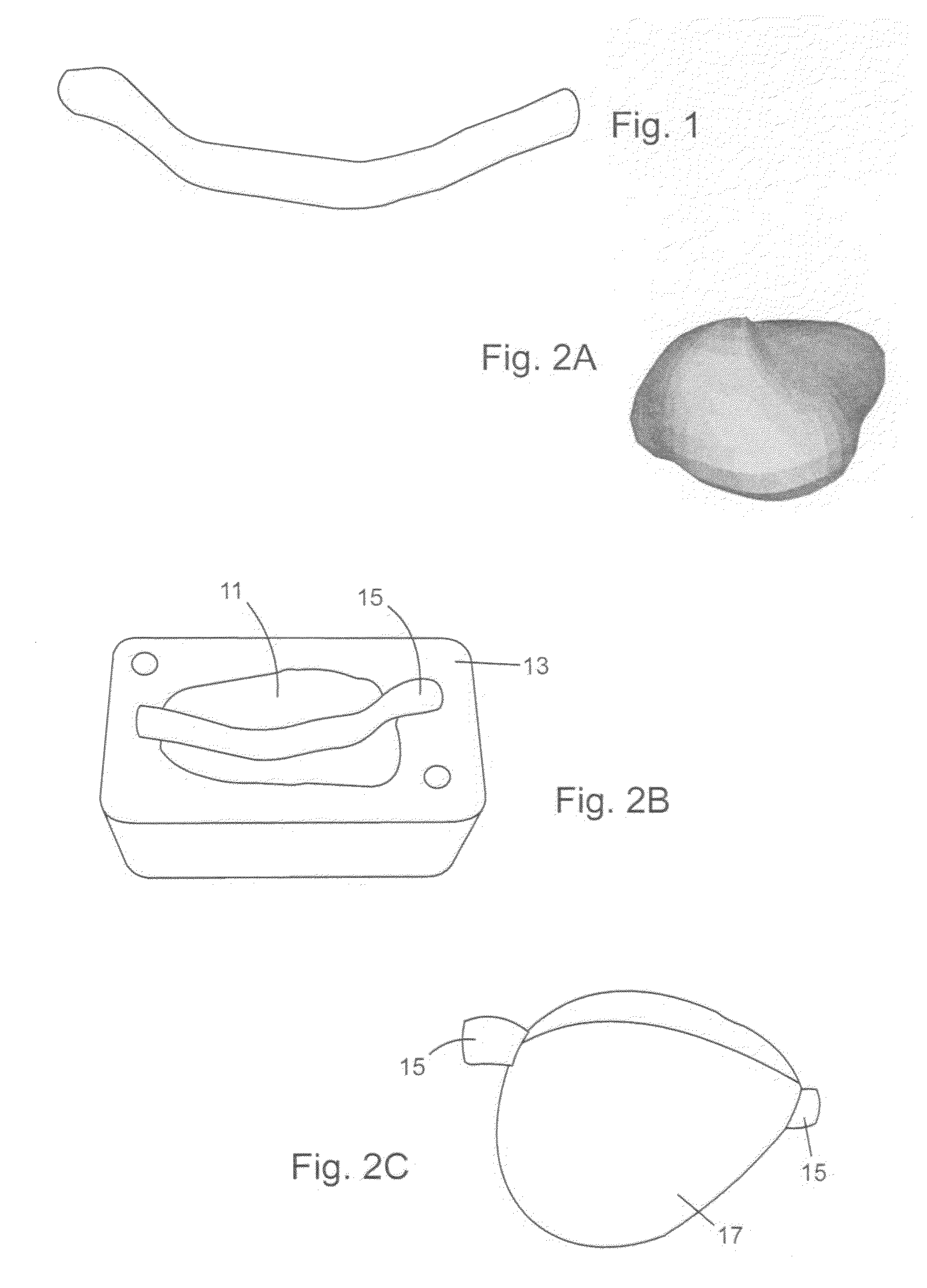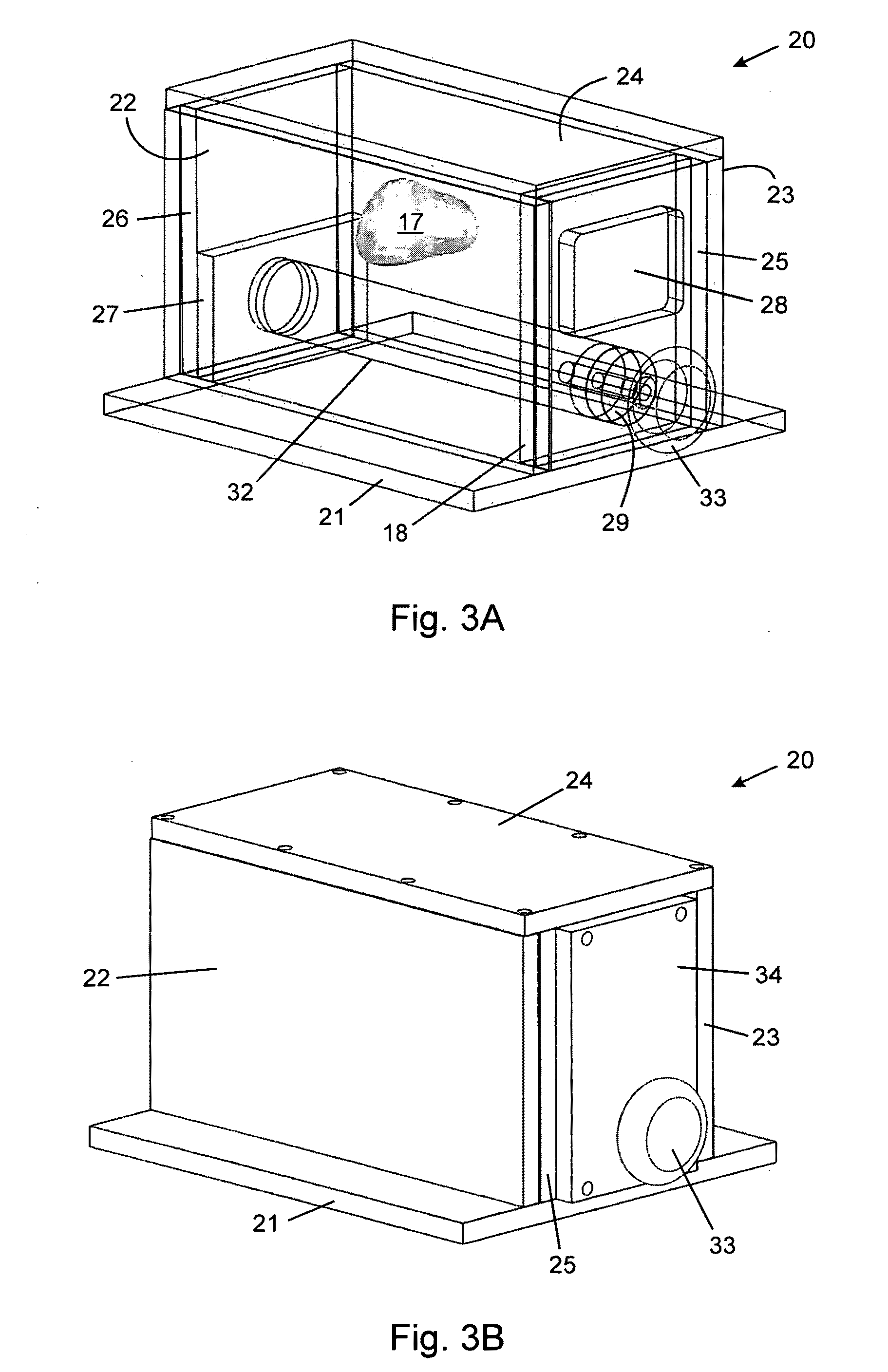Tissue-mimicking phantom for prostate cancer brachytherapy
a brachytherapy and tissue-mimicking technology, applied in the field of phantoms for prostate cancer brachytherapy, can solve the problems of incontinence and/or sexual dysfunction, inadequate and inaccurate placement of seeds, and no suitable animal model that would permit the evaluation of both needle insertion and ultrasound guidan
- Summary
- Abstract
- Description
- Claims
- Application Information
AI Technical Summary
Benefits of technology
Problems solved by technology
Method used
Image
Examples
example 1
Preparation of Polyvinyl Alcohol Cryogels
[0053]Into a 1000 ml three-necked flat-bottomed flask at room temperature is charged polyvinyl alcohol (PVA) powder (Mw=124,000-164,000; Aldrich 36, 316-2) and distilled or deionized water in amounts as shown in Table 1 depending on the desired amount and PVA concentration. At this stage, the PVA solution is abbreviated “PVA-S”.
[0054]The solution is mixed with a stirring rod and the flask is placed on a warm heating mantle. The necks of the flask are outfitted with a condenser, a thermometer and a stirrer (Heidoph type RZR.1). The solution is heated with stirring to a temperature of 80° C., being careful not to allow the temperature to exceed 95° C. (for higher proportions of PVA (>25%) the temperature is allowed to reach 80° C. before stirring is commenced). The solution is cooked at 80° C. for 1-2 hours (1 hour for 300 ml batches, 2 hours for 1000 ml batches) to produce a gooey PVA solution abbreviated as “PVA-H”, which is allowed to cool. ...
example 2
Preparation of Skin Tissue Phantom
[0056]A 3.5 mm thick PVA-C skin tissue phantom is created as follows.
[0057]A 300 ml batch of aqueous PVA-H solution comprising 20% w / w PVA is prepared in accordance with the procedure in Example 1. When the heating / stirring is finished, the temperature of the solution is allowed to drop to 70° C. A solution of 0.2% w / w Germall™ Plus (a biocide from ISP Sutton Laboratories) and approximately 2 ml distilled water is formed and gently stirred into the cooked PVA, being careful not to introduce air bubbles into the mixture. The resulting PVA solution is injected into a plate mould having dimensions suitable for the skin tissue phantom until the plate mould is full and allowed to cool for 1 hour.
[0058]Six freeze-thaw cycles are then performed on the PVA solution in the mould. The freeze-thaw cycles are performed in a heated / refrigerated circulator bath (VWR model 1187P) or an Environmental Chamber (Cincinnati Sub-Zero model ZH-8-1-H / AC). The temperature ...
example 3
Preparation of Urethra Tissue Phantom
[0060]An anatomically shaped PVA-C urethra tissue phantom is created as follows.
[0061]A mould in the shape of a urethra having the proper size and shape is created by using ultrasound diagnostic imaging to define tissue morphology by 3D reconstruction of ultrasound images. The mould is then constructed using fused deposition modelling (FDM).
[0062]A 300 ml batch of aqueous PVA-H solution comprising 15% w / w PVA is prepared in accordance with the procedure in Example 1. When the heating / stirring is finished, the temperature of the solution is allowed to drop to less than 55° C. A 20 ml aliquot of the PVA-H is placed in a beaker and 9% w / w (1.8 g) Sigmacell™ Type 50 (cellulose particles from Sigma-Aldrich) is gently stirred into the 20 ml aliquot of cooked PVA in the beaker, being careful not to introduce air bubbles into the mixture. The resulting PVA solution from the beaker is injected into the urethra-shaped mould until the mould is full and allo...
PUM
 Login to View More
Login to View More Abstract
Description
Claims
Application Information
 Login to View More
Login to View More - R&D
- Intellectual Property
- Life Sciences
- Materials
- Tech Scout
- Unparalleled Data Quality
- Higher Quality Content
- 60% Fewer Hallucinations
Browse by: Latest US Patents, China's latest patents, Technical Efficacy Thesaurus, Application Domain, Technology Topic, Popular Technical Reports.
© 2025 PatSnap. All rights reserved.Legal|Privacy policy|Modern Slavery Act Transparency Statement|Sitemap|About US| Contact US: help@patsnap.com



